M15 Globular Cluster
Click image for full size version
February 21, 2015
[previous version published in the Bulletin of the Royal Astronomical Society of Canada August 1, 2012; Astronomy Magazine Picture of the Day April 23, 2013]
M15 is a globular cluster in Pegasus, and I shot it while it was rising early in the morning of July 12, 2012. It was published a couple of times in 2012 and 2013, but I thought I could do a better processing job using techniques I have learned since the autumn of 2014.
M15 was catalogued by Messier, but was discovered by Jean-Dominique Maraldi in 1746. This cluster contains more than a hundred thousand stars, and is about 12 billion years old. It is a relatively close 33,000 light years away (close compared to the many distant galaxies you can also find throughout this shot).
Tekkies:
SBIG STL-11000M camera, Baader LRGB filters, 10″ f/6.8 ASA astrograph, MI-250 mount. Guided with STL-11000’s external guider and a 500mm f.l. Lumicon guide scope. Focus with FocusMax. Acquistion, guiding, calibration with Maxim-DL. Registration, Integration and all processing with PixInsight. Shot from my SkyShed in Guelph, Ontario. No moon, average transparency and seeing.
14x5mLm L, 5x5m R, and 6x5m G and B (total 2hr35m).
RGB:
R, G and B masters were cropped and the colour channels were combined to make an RGB image which was processed with DBE and ColourCalibration. HistogramTransformation was applied to produce a pleasing image.
Synthetic Luminance:
The L, R, G and B masters were combined to make a SynthL channel using ImageIntegration with default settings. DBE was applied to neutralize the background. HistogramTramsformation was applied to approximately match the RGB.
Combining L with RGB:
The luminance channel of the RGB was extracted, processed and then added back into the RGB image as follows:
1. Extract luminance from the RGB image.
2. Apply LinearFit using the Luminance as reference.
3. Use ChannelCombination in the Lab mode to replace the luminance of the RGB with the fitted luminance from step 2.
4. LRGBCombine was then used to make a LRGB image.
Final Processing
TGVDenoise was applied to the L only, followed by an additional HistogramTransformation to darken the background. HDRMultiscaleTransform was applied with a 6 px scale to the brightness with the mask option checked. A star mask was made and ColourSaturation applied to the stars. A very blurred range mask was made to protect background and stars and ColourSaturation was applied to the globular cluster. A luminance mask was made containing just bright stars, and their saturation was increased with CurveTransformation. A curve was applied to increase contrast.
Image scale is about 1.1 arcsec per pixel for this camera / telescope combination.

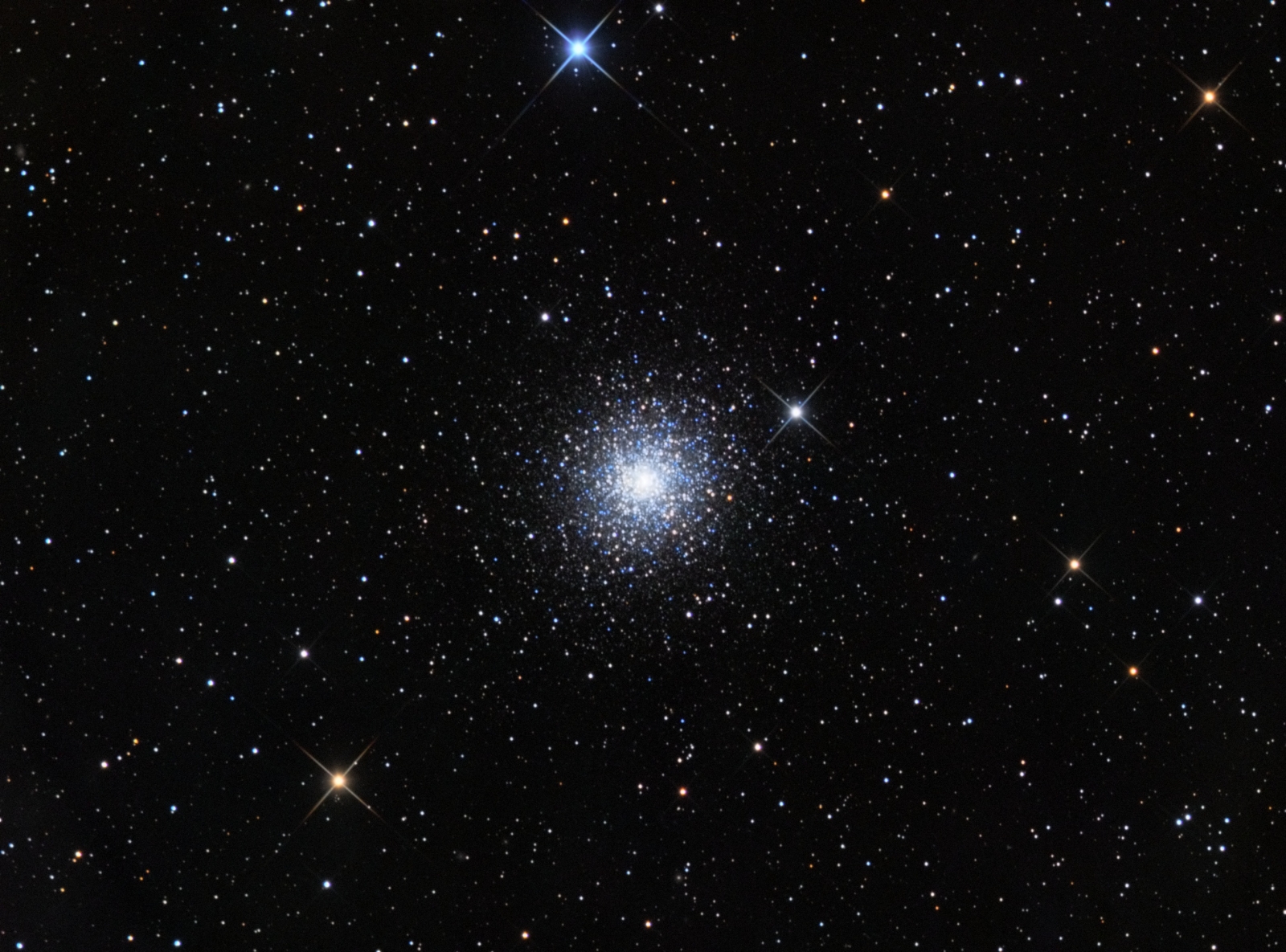

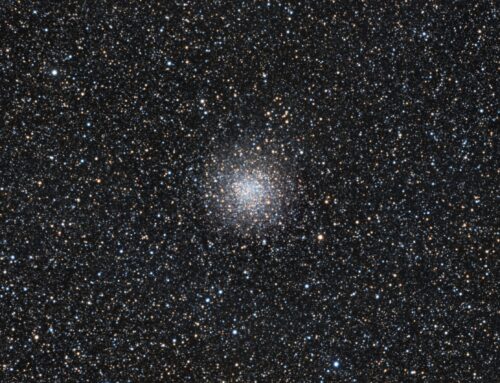
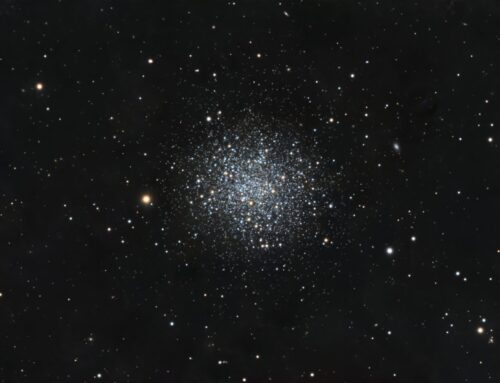
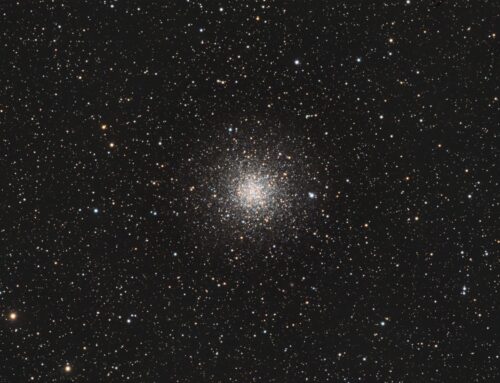
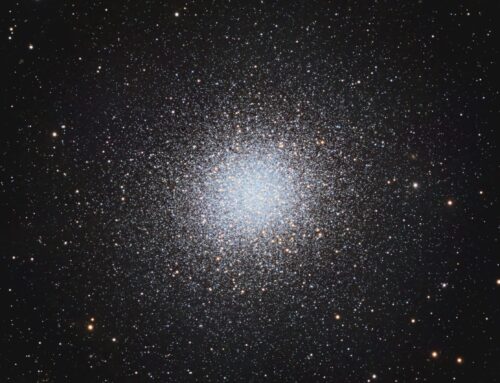
Great show, very well balanced. Prepared with great skill.